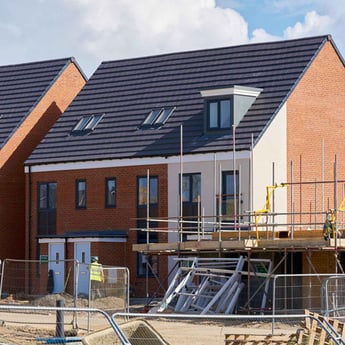Will keeping the Help to Buy scheme help solve the housing crisis?

There has been a lot of negative press recently surrounding Help to Buy, the Government’s flagship housing policy providing equity loans and reduced deposits to purchasers of new build properties. In particular, critics have sighted the bumper profits being made by housebuilders whilst Government funds are used to inflate prices and distort the market. Critics also question whether the scheme is helping the right people, stating that increasingly it is being used by second-time buyers, although still for their only home, and those on high incomes.
Concerns over Government subsidy of housebuilder shareholders are legitimate. The Government may make a return from the scheme, through the interest charged on the equity loan and house price rises, though a fall in house prices may result in a loss. One would question whether Government should be in the business of speculating on the housing market anyway, and whether housebuilders really need the support anymore. Many argue that the industry has now become dependent on the scheme.
However, I believe this warrants closer analysis. For a start, second purchases represent 19% of all sales under the scheme, a proportion which has been relatively constant throughout. While the share of purchases by households on incomes over £60,000 has increased from 8% in December 2014 to 10% today, this is not a huge change and 59% of sales are still to household incomes of £50,000 or less. The average purchaser household income is £63,550 in London and £45,000 in the rest of England.
Secondly, while I agree that the scheme could be doing more to focus its help exclusively on those who could not otherwise access property ownership, one should remember the purpose for which the scheme was originally conceived, and that was to expedite housing delivery.
The scheme was extended from FirstBuy, a scheme that was limited to first time buyers, purposefully to widen the scope and further support demand, in order to drive housebuilders to continue delivering supply. Delivery rates were poor and the Government sought to boost supply by expanding the scheme and continuing to focus only on new builds. Therefore, rather than judge the scheme against secondary objectives and side effects, it is fairer to judge with reference to its primary aim. On this basis it has undoubtedly been a success. A total of 169,000 sales have now been supported with the number of completions having risen year on year, equating to total investment of almost £9 billion, and sales rates have certainly been accelerated.
Next, there is the question of whether it is appropriate for the government to be involved in such a scheme and whether the industry is reliant on it. Certainly the Government should not be acting to distort the market in the long term, and it is probably true that in some cases the industry is over-reliant and would not react well to complete withdrawal of the scheme. There are ways, however, to gradually phase out the scheme over time. Its parameters can be tightened, potentially by reducing the maximum value of the property purchased or loan provided or, if the user of the scheme is the primary concern, restricting the household income of applicants or limiting the scheme to first time buyers only, effectively returning it to FirstBuy. These measures would narrow the scope of the scheme without removing it entirely.
Another potentially interesting approach is to limit the scope of the scheme geographically. Help to Buy could be targeted at areas of most severe under-delivery or acute affordability issues. A registration and monitoring regime is already in place and this could be adapted relatively easily to apply in certain areas only. Over time, this could be further limited only to specific regeneration areas where an enhanced rate of sale is desirable, in much the same way as employment uses are currently supported within Enterprise Zones with tax breaks and other incentives.
One still has to ask whether now is the right time to start to wind the scheme down. Undoubtedly the scheme has resulted in more homes being built. To some extent, the criticism that the industry couldn’t cope without the scheme is evidence of its effectiveness. In these uncertain times is it wise to risk falling sales rates, with knock-on effects on scheme viability and housing delivery?
Resolution of the housing crisis requires a full range of supply- and demand-side measures applied consistently over time, and Help to Buy has a place within this. There is scope to narrow its focus to fit more closely with other policies and programmes, but it may be prudent to reserve this for a more stable market than the one at present.
